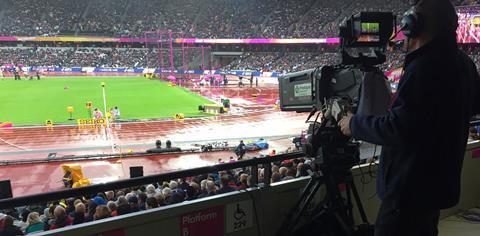Founder Mike Ransome, who led the dry hire company for almost 30 years before leaving, remembers it after it closes its doors

I actually started Presteigne by buying a failed test equipment rental business from the administrator. I looked at what was then still very much a broadcast business, and I observed the way the technology was about to change. I could see the potential for a strong dry hire specialist.
Before this I had been the sales director of AVS Broadcast, which became Avesco. We were still on good terms, so I sold Presteigne to them giving us solid financial backing, while I carried on as CEO – for another 28 years!
It was clear that to succeed we had to be on top of the technology. To do that, we had to be in bed with manufacturers. We couldn’t be at the far end of the sales channel; if we were going to anticipate our clients’ needs, understanding the technology they might require was essential. So, one of my first accomplishments was to form tight relationships with all the key vendors.
A great example is the Sony MAV-555 digital disk recorder. We were one of the first to buy, and they were hugely popular with our clients. Broadcasters were using them for time delays on live broadcasts. They were so popular with us that, when Sony ceased manufacturing them, we bought second-hand units on eBay. The rental rates were strong: they covered their costs within a year and continued to deliver good revenues.
Much of a dry hire company’s business involves filling gaps. An OB truck has 12 cameras on board, but this game needs 14. That is when they came to Presteigne. At the height of the business we had maybe 150 cameras on our inventory, along with big box lenses, heads and pedestals, cables and controllers.
But the other part of the business – the exciting part – was seeing how the latest developments in technology could be transformative. We had built an analogue flyaway kit in the early days, but as digital technologies were maturing, we built our first digital flyaway, around a Sony MVS-8000 switcher. I remember its first outing was for CTV, to the Cream reunion concert at the Royal Albert Hall.
We spotted that the jump to digital would have a particular impact in RF technology. Analogue wireless cameras were pretty clunky, needing engineers to track the cameras with dish receivers. Multiplexed digital receivers transformed RF cameras, and we were at the forefront, developing a big specialist department.
We were pretty much the first to build mesh networks for wide area coverage. CTV was pitching to the BBC for the Oxford and Cambridge Boat Race one year and I was part of the tender presentation team. We showed that we could build a single RF network over the complete 7km length of the course and put two cameras on each of the racing boats and four more on the following vessels. Our technology transformed the production.
Planning and delivering technological innovation called for bright people. We actively recruited a lot of young people, often as drivers or in the warehouse. Many of them were keen to learn, and we actively encouraged them.
I remember a driver who showed a lot of interest. We funded him through college to get a strong electronics background, and within just a couple of years he had gone from driving the van to rigging and operating RF links on live outside broadcasts.
We had a warehouse guy who would come in on Saturdays, put an EVS on a bench, and teach himself how to operate it. Again, we paid for his college qualifications and now he is a leading light in the industry. Those were just two of the many young people we developed through the business across all departments.
We had no formal contracts with these people. We agreed that we would provide the training and they would give us at least a couple of years once they qualified. They all stayed longer than that.
All the people who worked for Presteigne, at every level, contributed so much to making the business a success, and I feel so sad for them. I miss the clients, too, of course: my frequent flyer accounts were colossal.
Now hire businesses are under threat. In part that is because of the commoditisation of the media industry. You can build a business around buying, renting and amortising an LDK-8000 camera; you can’t do that with a GoPro.
There are still areas where specialisation can keep rates firm. RF networks still need design and set-up; cine-style cameras is another area. If dry hire businesses are to have a future, they need to take a step back and be sure of what they are offering.

Mike Ransome founded Presteigne Broadcast Hire in 1991, and was its CEO until 2020. He is now managing director of MCR Broadcast Hire.





No comments yet